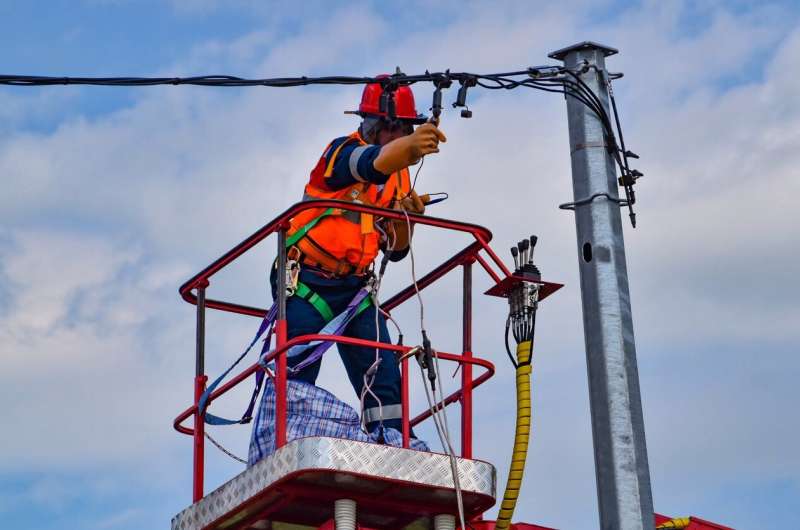
The behavior of specific weather patterns and their impact on power faults could be used to develop a weather pattern-conditioned fault forecasting system for power system operators.
Researchers at the University of Bristol have discovered that in most cases there are relevant connections between each type of fault and a set of relevant weather patterns.
The study, published in Communications Earth & Environment, shows that winter weather patterns characterized by high wind speeds and high precipitation volumes are responsible for many instances of power outages through wind, gale and lightning strikes.
They also discovered weather patterns with moderate to high snowfall are often linked to power outages caused by snow and ice. The paper is titled "Identification of weather patterns and transitions likely to cause power outages in the United Kingdom."
Because the high-risk weather patterns identified in their work has been shown to have good levels of predictability with valuable lead time, up to several weeks in advance, these clear links between specific weather patterns/pattern transitions and power outages could significantly improve the preparedness of the United Kingdom and broader European distribution network operators for adverse weather conditions.
These connections were made using a large dataset for Great Britain and two smaller complementary datasets representing Southern Scotland and Northeast England.
Lead author Dr. Laiz Souto, from Bristol's Department of Electrical and Electronic Engineering, explains, "It is well known that different weather phenomena, such as lightning strikes, wind and gale, snow and ice, are common causes of power system failures, and their frequency of occurrence varies depending on weather conditions and seasons.
"However, none of these efforts considered that the occurrence of different types of weather-induced power system failures is related to specific large-scale atmospheric circulation types, which we refer to here as weather patterns. For the first time, we looked at the relationships between these weather patterns and power system failures with the objective of identifying relevant trends to predict and prepare for power outages."
The team extended the application of an existing set of 30 Met Office daily weather pattern definitions to the electricity infrastructure. They analyzed the occurrence of 30 pre-defined daily weather patterns along with nearly 70,000 power system failures in the UK between 2010 and 2019 to investigate the predictability of weather-induced power outages. They managed to identify high-risk weather patterns associated with power system failures caused by different weather phenomena for all seasons.
Co-author Professor Phil Taylor, pro vice-chancellor for research and enterprise at the University of Bristol, concludes, "We identified high-risk weather patterns, as well as weather pattern transitions and persistence, likely to cause power outages across seasons in the UK. We identified relevant trends between weather patterns and power system failures caused by different weather phenomena, such as wind and gale, lightning strikes, snow and ice.
"Our approach overcomes limitations in the temporal resolution of current practices adopted by distribution network operators and will significantly help operators to be ready for the most challenging weather."
More information: Laiz Souto et al, Identification of weather patterns and transitions likely to cause power outages in the United Kingdom, Communications Earth & Environment (2024). DOI: 10.1038/s43247-024-01217-w
Citation: Links discovered between weather patterns and power outages could help UK protect itself from disruptive weather (2024, January 23) retrieved 23 January 2024 from https://techxplore.com/news/2024-01-links-weather-patterns-power-outages.html
This document is subject to copyright. Apart from any fair dealing for the purpose of private study or research, no part may be reproduced without the written permission. The content is provided for information purposes only.
